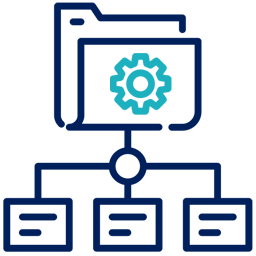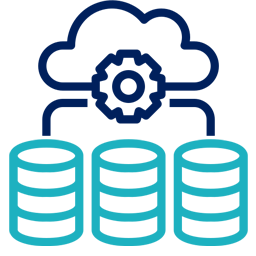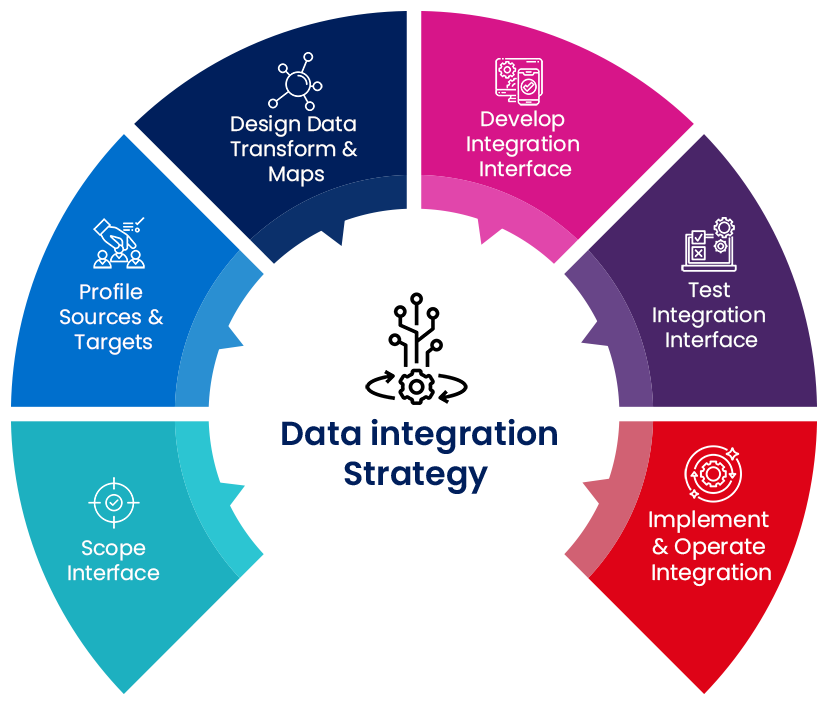The data engineering landscape has fast evolved. The data that we handle today is voluminous, has different origins, is available in multiple formats, and needs proper security controls. Hence, businesses need to be extra cautious of the data they collect, how long they keep it accessible, who has access to it, and the security controls around their data platforms.
At Innova, we use proven and proprietary data architectures based on digital accelerators and frameworks, along with cloud engineering services to accelerate your data efforts. We ensure that the data is secured, easily accessible to end users, performant to business requirements and is accurate and consistent. With in-depth data engineering expertise and an innovative approach, our teams focus on building a trustworthy data foundation that enables analytics. We leverage the right technology and tools to analyze structured, semi-structured, and unstructured data, turn it into powerful insights and reinforce data-driven transformation.
Our Service Offerings
We understand that data architecture is a key component of an enterprise’s data strategy so that it can attain significant business value. The data architecture we implement is intelligent, collaborative, and constantly evolving to address new business and user needs and its four main components include:
Data Warehouse Optimization: We identify and analyze your existing data warehouse gaps by interviewing relevant stakeholders. We offload the less frequently used data to Hadoop to ensure better performance and increased flexibility. This approach allows organizations to combine historical data with new data and leverage visual integration tools that eliminate the need for manual coding of scripts for data ingestion and blending.
Data Lake and Lakehouses: We realize that a data warehouse alone may not serve as a single source of truth for enterprise data. Hence, we integrate it with Data Lake and Data Lakehouses to ensure you can store your data as-is, without first having to structure the data and then run analytics on it. We ensure that you can access the data in a single place and then apply analytics that can range from real-time analytics, machine learning, visualizations and dashboards to big data processing. We also facilitate:
Case Study
Data Warehouse Solution for a Logistics Company

Strategy & Roadmap Creation

Prototyping & Tool Evaluation

Data Integration, access & services

Construction & Go-Live Enablement
Data Mesh: With our data mesh services, organizations can perform enhanced analytics on the data even in the absence of centralized data architecture. Before implementing a data mesh for an organization, we assess whether it is facing a large proliferation of data sources and use cases and if data enabling AI/ML would act as a strategic differentiator. As we set up the cloud-native, domain-oriented data mesh, we are guided by the four core pillars which are :
Data as a product

Decentralized domain ownership

Self-service data infrastructure platform

Federated computational data governance
Stream Analytics: As enterprises collect data at the speed of millions of events per second the result is massive datasets. To generate near-instant insights and act on time, they require real-time data processing and analysis. Organizations can ingest, process, and analyze event streams instantaneously with our stream analytics expertise. They can design and deploy sophisticated analytics, detect and analyze patterns, automate responses that lead to intelligent actions, and minimize human intervention. Our stream analytics solutions facilitate:

Real-time Ingestion

Scalable Data Processing & Storage

Analytics, Dash-boarding & Alerting
For us, MDM is more of an approach than technology implementation. With Innova’s MDM services you can effectively handle large data volumes, ensure quality and consistency across the various data sets, and access fast, scalable, unified, and trusted data that ensures the success of the AI/ML initiatives. Once the data is in sync, the reporting and analytics solutions can help inform strategic business decisions.
Our MDM approach is a key enabler for providing a trustworthy view of data and helps overcome challenges related to siloed systems resulting in multiple versions of enterprise data, data errors owing to manual data entry, and dated timelines. Our focus remains on making master data more insightful by implementing policies to validate the accuracy, coherence, and accessibility of data.
With a trusted 360-degree authoritative view into enterprise data, you can gain full visibility into the master data lifecycle, manage data preferences in a single place, decide on the relationships and hierarchies of product, location and customers, and leverage better data for more accurate reporting.
Case Study
Master Data Management

Data integration is the answer to data silos that often result in cost inefficiencies. We help organizations move through the six-phased data integration lifecycle seamlessly by adopting the following approach:
Right at the start we document the sources and check whether they have been integrated in the past. The data discovery and profiling phase follows which includes master data management and data archiving. Next, all the moving data is secured and encrypted to minimize unauthorized access.
Consequently, we build data integration transformation and design maps based on the templates and architecture defined in the overarching Data Integration Strategy. It is at this step that the “source-to-target” design occurs, and we reuse past logic to the extent possible without interfering with future extensibility needs. In addition, we ensure that security requirements are enforced so that if the business rules do not require it, we don’t transfer sensitive data to the destination.
Combining the scope, data profile, and design we develop the data integration interface. We consult our Data Integration Center of Excellence (CoE) to ascertain the architecture or development style. Innova’s CoE comprises data integration specialists, domain experts and technical architects who rely on our time-tested processes to deliver data integration solutions. It is at this stage that we also carry out unit testing that helps us validate the data from the source to the target, and whether the required business rules and transformations have been appropriately applied. Finally, we implement the data integration interface that has been developed and assess the risk levels to establish effective security policies.
Our consultants understand standards, frameworks, and legislations for information exchange (e.g., NIEM, FHIR) and security (e.g., HIPAA, NCIC) to design, develop, and implement interfaces between vendor products, custom applications, and other disparate systems, applications, and data. As the number and complexity of the interfaces keep growing, managing the interfaces can get overwhelming. However, by implementing data integration best practice techniques organizations can manage their interfaces efficiently.
Hence, for each client, we look at the type of data that is being passed between the systems, the integration use cases, and pain points they need to address. We then provide a data integration strategy that entails the following steps:

Data Architecture & Design
We understand that data architecture is a key component of an enterprise’s data strategy so that it can attain significant business value. The data architecture we implement is intelligent, collaborative, and constantly evolving to address new business and user needs and its four main components include:
Data Warehouse Optimization: We identify and analyze your existing data warehouse gaps by interviewing relevant stakeholders. We offload the less frequently used data to Hadoop to ensure better performance and increased flexibility. This approach allows organizations to combine historical data with new data and leverage visual integration tools that eliminate the need for manual coding of scripts for data ingestion and blending.
Data Lake and Lakehouses: We realize that a data warehouse alone may not serve as a single source of truth for enterprise data. Hence, we integrate it with Data Lake and Data Lakehouses to ensure you can store your data as-is, without first having to structure the data and then run analytics on it. We ensure that you can access the data in a single place and then apply analytics that can range from real-time analytics, machine learning, visualizations and dashboards to big data processing. We also facilitate:
Case Study
Data Warehouse Solution for a Logistics Company

Strategy & Roadmap Creation

Prototyping & Tool Evaluation

Data Integration, access & services

Construction & Go-Live Enablement
Data Mesh: With our data mesh services, organizations can perform enhanced analytics on the data even in the absence of centralized data architecture. Before implementing a data mesh for an organization, we assess whether it is facing a large proliferation of data sources and use cases and if data enabling AI/ML would act as a strategic differentiator. As we set up the cloud-native, domain-oriented data mesh, we are guided by the four core pillars which are :
Data as a product

Decentralized domain ownership

Self-service data infrastructure platform

Federated computational data governance
Stream Analytics: As enterprises collect data at the speed of millions of events per second the result is massive datasets. To generate near-instant insights and act on time, they require real-time data processing and analysis. Organizations can ingest, process, and analyze event streams instantaneously with our stream analytics expertise. They can design and deploy sophisticated analytics, detect and analyze patterns, automate responses that lead to intelligent actions, and minimize human intervention. Our stream analytics solutions facilitate:

Real-time Ingestion

Scalable Data Processing & Storage

Analytics, Dash-boarding & Alerting
Master Data Management (MDM)
For us, MDM is more of an approach than technology implementation. With Innova’s MDM services you can effectively handle large data volumes, ensure quality and consistency across the various data sets, and access fast, scalable, unified, and trusted data that ensures the success of the AI/ML initiatives. Once the data is in sync, the reporting and analytics solutions can help inform strategic business decisions.
Our MDM approach is a key enabler for providing a trustworthy view of data and helps overcome challenges related to siloed systems resulting in multiple versions of enterprise data, data errors owing to manual data entry, and dated timelines. Our focus remains on making master data more insightful by implementing policies to validate the accuracy, coherence, and accessibility of data.
With a trusted 360-degree authoritative view into enterprise data, you can gain full visibility into the master data lifecycle, manage data preferences in a single place, decide on the relationships and hierarchies of product, location and customers, and leverage better data for more accurate reporting.
Case Study
Master Data Management
Data Integration & Security

Data integration is the answer to data silos that often result in cost inefficiencies. We help organizations move through the six-phased data integration lifecycle seamlessly by adopting the following approach:
Right at the start we document the sources and check whether they have been integrated in the past. The data discovery and profiling phase follows which includes master data management and data archiving. Next, all the moving data is secured and encrypted to minimize unauthorized access.
Consequently, we build data integration transformation and design maps based on the templates and architecture defined in the overarching Data Integration Strategy. It is at this step that the “source-to-target” design occurs, and we reuse past logic to the extent possible without interfering with future extensibility needs. In addition, we ensure that security requirements are enforced so that if the business rules do not require it, we don’t transfer sensitive data to the destination.
Combining the scope, data profile, and design we develop the data integration interface. We consult our Data Integration Center of Excellence (CoE) to ascertain the architecture or development style. Innova’s CoE comprises data integration specialists, domain experts and technical architects who rely on our time-tested processes to deliver data integration solutions. It is at this stage that we also carry out unit testing that helps us validate the data from the source to the target, and whether the required business rules and transformations have been appropriately applied. Finally, we implement the data integration interface that has been developed and assess the risk levels to establish effective security policies.
Our consultants understand standards, frameworks, and legislations for information exchange (e.g., NIEM, FHIR) and security (e.g., HIPAA, NCIC) to design, develop, and implement interfaces between vendor products, custom applications, and other disparate systems, applications, and data. As the number and complexity of the interfaces keep growing, managing the interfaces can get overwhelming. However, by implementing data integration best practice techniques organizations can manage their interfaces efficiently.
Hence, for each client, we look at the type of data that is being passed between the systems, the integration use cases, and pain points they need to address. We then provide a data integration strategy that entails the following steps:








